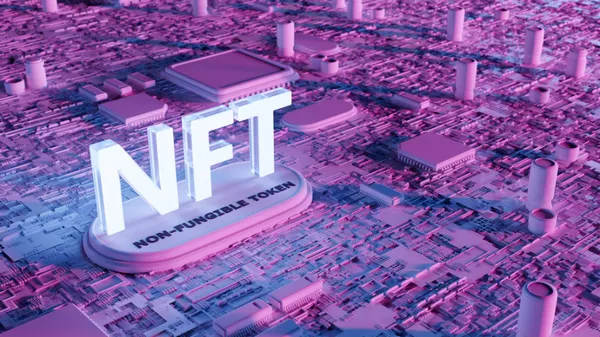Non-fungible tokens (NFTs) have revolutionized the digital art and collectibles market, offering unique digital assets that are verifiably scarce and indivisible on blockchain platforms. In this article, we delve into what makes an NFT truly unique, examining factors such as rarity, artistic merit, technological innovation, and broader cultural significance. Join us as we explore some of the most exceptional NFTs to date and the impact they have had on the digital economy.
Understanding NFTs: A Primer
What are NFTs?
NFTs are cryptographic tokens that represent ownership or proof of authenticity of a unique item or piece of content, typically stored on a blockchain, most commonly Ethereum. Unlike cryptocurrencies like Bitcoin or Ethereum, which are fungible and interchangeable, each NFT is distinct and cannot be replicated.
Characteristics of NFTs
- Indivisibility: Each NFT is unique and cannot be divided into smaller units.
- Verifiability: Ownership and authenticity are verified on the blockchain, providing transparency and trust.
- Interoperability: NFTs can be bought, sold, or traded on various online marketplaces and platforms.
Criteria for Assessing Uniqueness
Rarity and Scarcity
- Limited Editions: NFTs that are part of a limited series or are one-of-a-kind.
- Historical Significance: NFTs associated with significant events or milestones in art, culture, or technology.
Artistic Merit and Innovation
- Creative Expression: NFTs that push the boundaries of digital artistry and creativity.
- Technological Innovation: Use of cutting-edge technology in the creation or presentation of the NFT.
Cultural Impact and Influence
- Social and Cultural Relevance: NFTs that resonate with a broad audience or capture a moment in cultural zeitgeist.
- Economic Value: Market value and impact on the broader NFT ecosystem.
Case Studies of Unique NFTs
CryptoPunks
- Description: One of the earliest examples of NFTs, CryptoPunks are 10,000 unique 24×24 pixel art characters generated algorithmically.
- Uniqueness: Each Punk is distinct in appearance and traits, contributing to their rarity and collectibility.
- Cultural Impact: Popularized the concept of digital collectibles and established a vibrant secondary market.
Beeple’s “Everydays: The First 5000 Days”
- Description: A digital art collage created by artist Beeple (Mike Winkelmann), featuring 5,000 unique artworks produced daily over 13 years.
- Uniqueness: Represents a monumental achievement in digital art and NFTs, showcasing artistic consistency and evolution.
- Auction Impact: Sold for $69.3 million at Christie’s, setting a record for the highest price paid for an NFT at the time.
Meebits by Larva Labs
- Description: A collection of 20,000 3D voxel-based characters created by Larva Labs, known for their earlier work on CryptoPunks.
- Uniqueness: Combines 3D modeling and blockchain technology, offering customizable avatars with potential for virtual world integration.
- Community Engagement: Generated significant interest and participation in the NFT community and broader gaming sectors.
The First Tweet as an NFT
- Description: Twitter CEO Jack Dorsey’s first tweet, “just setting up my twttr,” tokenized as an NFT on the Valuables platform.
- Uniqueness: Represents a convergence of social media history and blockchain technology, highlighting the potential of NFTs to tokenize digital content beyond traditional art forms.
- Cultural Significance: Sparked discussions on digital ownership and the value of internet history in the NFT space.
Virtual Real Estate in Decentraland
- Description: Parcels of virtual land within the decentralized virtual world of Decentraland, represented as NFTs.
- Uniqueness: Offers ownership and development opportunities in a virtual environment, blending aspects of digital real estate and social interaction.
- Economic Ecosystem: Supports a thriving marketplace for virtual goods, events, and entertainment, fostering a digital economy within the metaverse.
Technological Innovations in NFTs
Layer 2 Solutions
- Description: Scalability solutions such as Ethereum’s Layer 2 protocols (e.g., Polygon, Optimism) to reduce transaction costs and increase transaction throughput.
- Impact: Improves usability and accessibility of NFTs, enabling broader adoption and integration in decentralized applications (dApps).
Royalty Mechanisms
- Description: Smart contracts that automate royalty payments to creators each time their NFT is resold.
- Benefit: Ensures ongoing compensation for artists and creators, promoting sustainability and fairness in the NFT marketplace.
The Future of Unique NFTs
Market Trends and Predictions
- Mainstream Adoption: Increasing interest from collectors, artists, and institutions in NFTs as a form of digital ownership.
- Regulatory Considerations: Potential regulatory frameworks and challenges in the NFT space.
- Emerging Technologies: Impact of advancements in blockchain technology on the evolution of NFTs.
See also: What’s the Meaning and Impact of NFT Images
Conclusion
The world of NFTs continues to evolve rapidly, driven by innovation, creativity, and technological advancements. As we’ve explored, the definition of what makes an NFT unique encompasses rarity, artistic merit, technological innovation, and cultural impact. From early pioneers like CryptoPunks to groundbreaking auctions like Beeple’s “Everydays,” each unique NFT contributes to the expanding digital landscape and redefines concepts of ownership and value in the digital age.
In conclusion, while the quest for the most unique NFT may be subjective and ever-evolving, understanding the criteria and case studies highlighted in this article provides valuable insights into the diversity and potential of NFTs as a transformative force in the global economy.
Related topics:

















